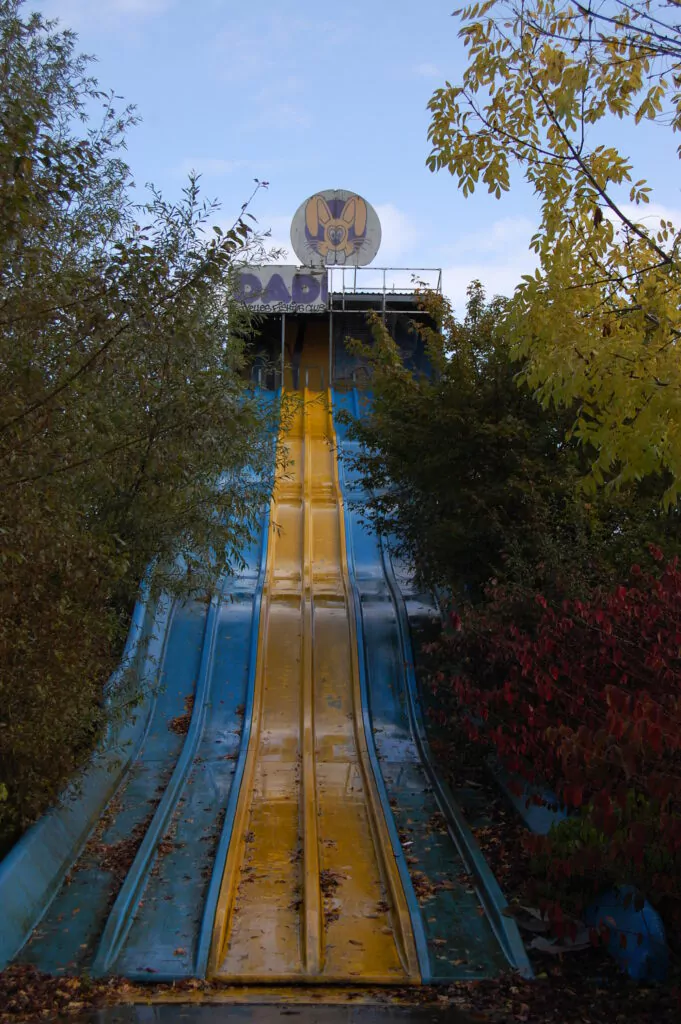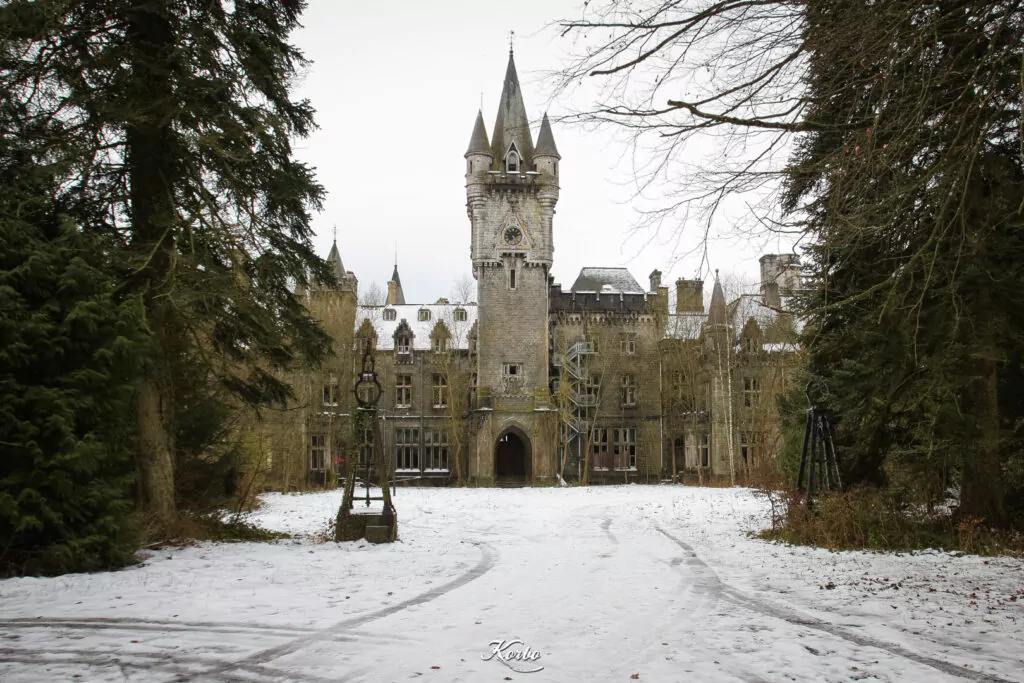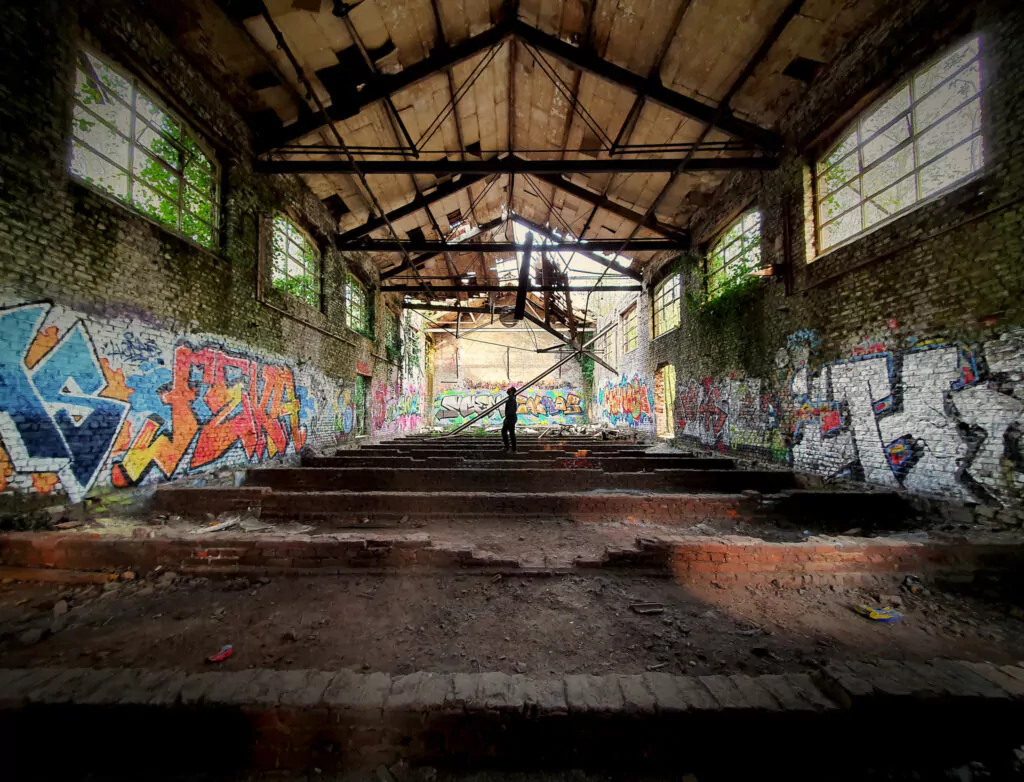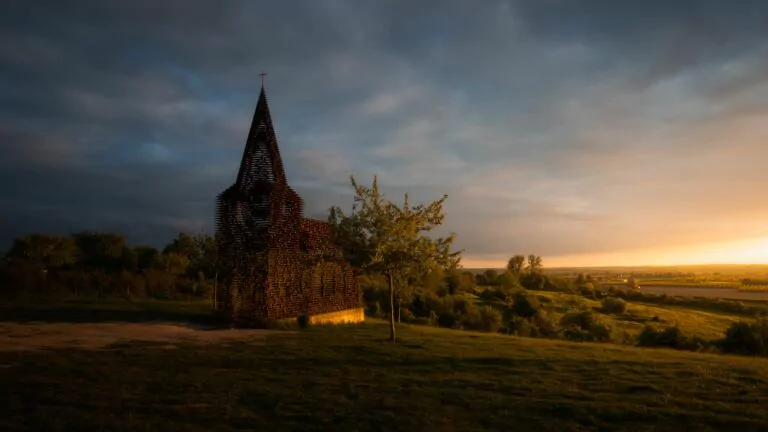The beginnings: a family park open to everyone
Dadipark opened its doors in 1950 in Dadizele, a small town in Belgium. Originally, the park was just a playground created for the children of pilgrims visiting the Basilica of Our Lady of Dadizele. Under the initiative of priest Gaston Deweer, it quickly evolved into a real family amusement park, accessible and affordable for all.
Unlike major amusement parks such as Walibi or Bellewaerde, Dadipark did not rely on roller coasters or spectacular rides. Its concept was simple: outdoor playgrounds, giant slides, and above all an 800-meter-long suspension bridge — the longest in Europe at the time. A true paradise for children!




